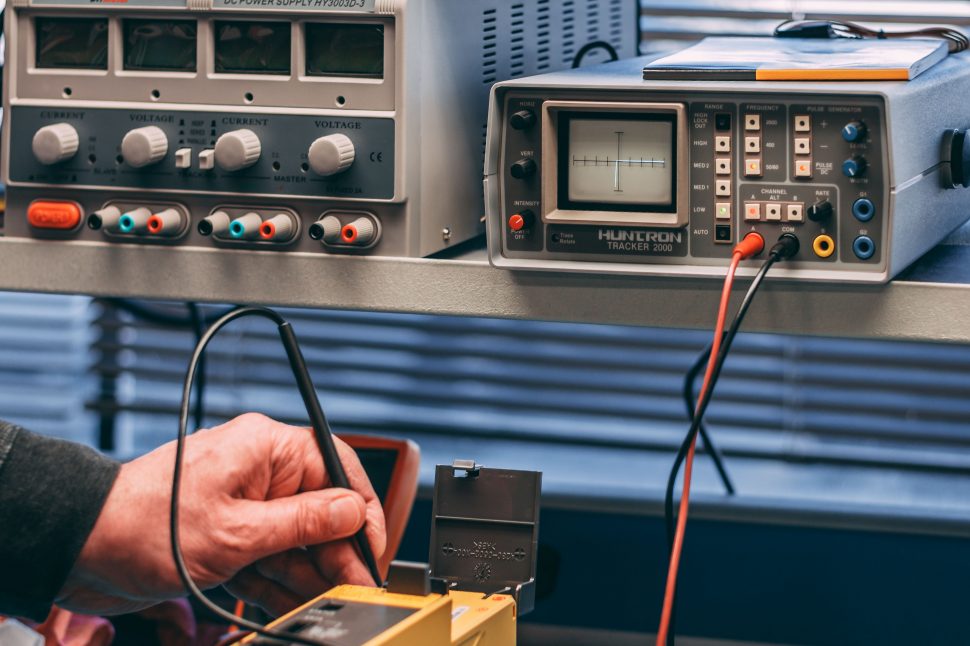Fanuc Servo Amplifier Alarm 8, 9, or A
A Fanuc servo amplifier that has an 8, 9, or A alarm indicates high current or short circuit in the amplifier or motor. You must determine which axis is at fault before moving on to the next step. The alarm points to the axis in question.
- 8 Alarm = L Axis
- 9 Alarm = M Axis
- A Alarm = N Axis
Engineer Tip: make sure it is not a mechanical failure or binding condition on the machine that is causing the Fanuc servo amplifier alarm 8, 9, or A fault beforehand.

Determining if your Servo Amp or Motor is Defective
Does the alarm occur before motor power is present?
- Yes
- Fault could be an issue with the feedback circuit or servo amp. Disconnect feedback cable and turn power on to isolate failure. No alarm means that you have a feedback cable or pulse coder issue. If the fault is still present, you have a problem with the servo amp.
- No
- Keep troubleshooting.. continue by following the steps below.
Does the alarm occur when motor power is present?
- Yes
- There could be an issue with the motor power circuit or servo amplifier. Disconnect the motor power cable and apply power to isolate the failure. No alarm means that you have a problem with the servomotor or power cable. Follow the steps listed under the Servo Motor Static Test section to confirm your diagnosis. If the fault is still present, you have a problem with the servo amp. You can confirm the diagnosis by following the steps listed under the Servo Amplifier Static Test section.
Servo Amplifier Static Test
Important: Shut Off Power!
- Check the outputs by using a Huntron Tracker or Ohmmeter. Measure the resistance from the positive bus bar to the motor power connectors U, V and W terminals. You will be looking for high resistance (hundreds of k ohms and up) and the measurements should be similar between the three terminals.
- Next, measure the resistance from the negative bus bar to the motor power connector U, V and W terminals. You will be looking for high resistance (tens of k ohms and up) and the measurements should be similar between the three terminals.
- If readings vary, replace the servo amp.

Servo Motor Static Test
Important: Shut Off Power!
- Disconnect the power cable from the servo amplifier. Grab your megohmmeter and measure the insulation resistance from the disconnected motor power leads to ground. You can purchase a low cost entry-level model for around $100. We recommend the Supco M500 LED Line Powered Megohmmeter for its ease of use and reliability.
- If a grounded condition is detected, separate the motor and motor power cable and re-test. Still grounded? Then you most likely have a bad cable. Otherwise you have a good cable with a bad motor. You will need to get the servo motor repaired.
- Use the AC Servo Motor Resistance Value Chart to determine the severity of the grounded condition.

AC Servo Motor Resistance Value Chart
| Insulation Resistance | Judgement |
|---|---|
| 400 M ohms or higher | Good | Safe to use. |
| 150 to 300 M ohms | Acceptable | May fault under load or heat, though. |
| 40 to 100 M ohms | Caution | May damage other equipment. |
| 20 M ohms or lower | Bad | Do not use. |
Engineer Tip: motors can fail phase to phase as well. Use a multimeter to check the motor winding resistance between phases. The motor is bad if the resistance is not equal phase to phase.
What If Resistance Measurements Are Good?
If all resistance measurements are good – the opto-isolators, current sensors, or IGBTs are faulty in the amplifier. You will have to find a replacement or get it repaired by a qualified repair center. Do not install a new amplifier before you have checked the motor and cables.
And about those hundreds if not thousands of fault and alarm codes unique to each servo motor: if they frusturate your operations, uncomplicate the landscape and cut through the confusion. Send us your code and we’ll of a solution to remedy it.
And about those hundreds if not thousands of fault and alarm codes unique to each servo motor: if they frusturate your operations, uncomplicate the landscape and cut through the confusion. Send us your code and we’ll of a solution to remedy it.







